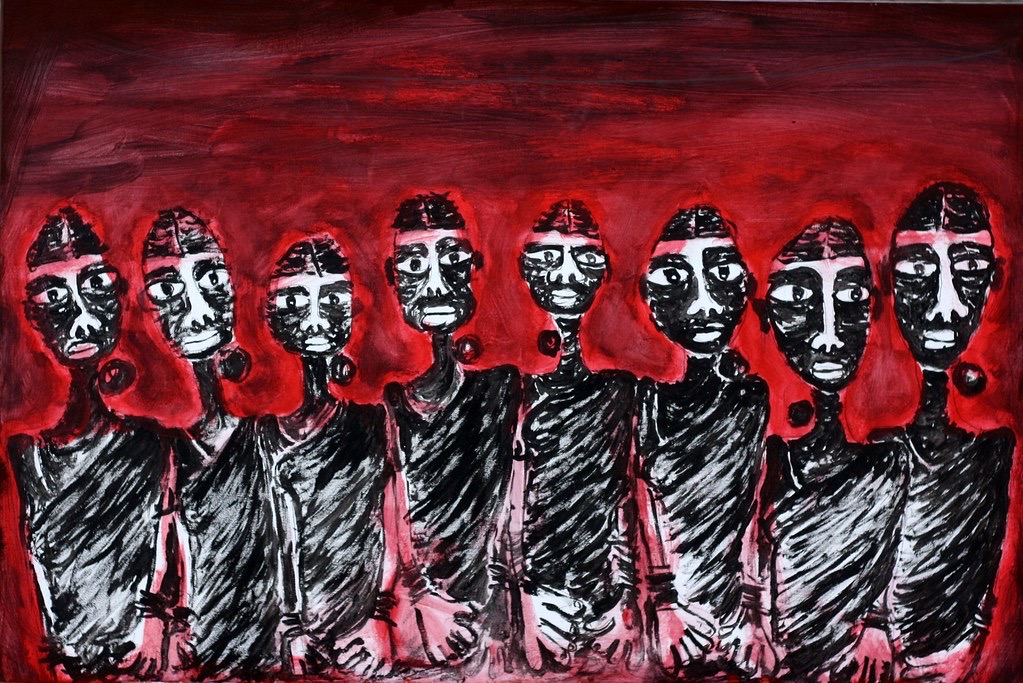The Indian caste apparatus flourished inside the womb of various religions of the Indian subcontinent. Caste practices grow across many religions, like the Sayed-Ajlaf division in Islam; and Jats, Khatris, and Aroras in Sikhism. What is primary to note is that Caste, across all faiths, is a socio-economic practice that creates innate social divisions based on birth, gender, occupation, mobility, etc. Caste can be understood as an arbitrary divide that provides power to a small section of society to mend and bend social order rules exploit historically marginalised communities, and govern the practices of religion and art.
Art and religion have always travelled together across the histories of the Indian subcontinent. Caves of Bhim Betka, Hindu temple sculptors under Hoysala and Chalukya dynasty rule, European paintings of Jesus and Mary presented in the court of Mughal emperors by Portuguese traders or calendar art of Raja Ravi Verma. Ironically, means of decoration and devotion for the upper Caste were and still are hugely painted, sculpted, weaved or sung by Dalits across the subcontinent. Indian visual arts and architecture have aged with the Dalit community.
Across the span of the hundreds of years of caste-based discrimination in India, art produced by Dalits and other lower caste communities has tried to redefine realities of religion, sexual violence, slavery, temple customs and monochromatic understanding of God. The use of visuals, sculptors and digital space as forms of protest by Dalit artists repeatedly redefines the notion of purity and religion.
Since religion can be understood as a superstructure that operates on the legs of Caste, Dalit artists might understand art as their expression to redefine oppressive definitions of religion. In other words, complex and seemingly unapproachable structures of Indian religions have been reshaped by Dalit artists through visual arts.
An effort can be made to trace the formation of a defining Dalit spirituality through visual mediums of art in Indian history.
Indian Dalit Art
Inspired by the ‘Black History Month‘ of the United States, a group of Dalit Women started Dalit History Month in April 2015. The seven-member group called the Dalit History Month Collective, gained traction because it gave space and medium to Dalit artists. This community-based celebration of Dalit Pride Month for April is now becoming part of the socio-political calendars of megacities like Chennai, Delhi or Nagpur.
The 2011 census (also the last census on caste) pegged the official number of SCs to be 200 million and STs to be 100 million, excluding many who converted to Buddhism, Christianity, Sikhism and Islam. The compartmentalisation of the Indian population based on caste, religion, and gender served the country’s politicians, but lesser did it do to award voice and representation to the marginalised sections of the society.
Dalit visuals have been an active part of the politics of India because of some strong leaders of the Dalit movement like Baba Saheb, Phule, Kanshi Ram, Periyar E.V. Ramasami Naickar, etc. Sometimes Dalit visuals suit the aesthetics of the city space, like Mayawati’s giant Ambedkar parks in Lucknow and Noida or Madhubani art by the Dusadh and Chamar communities of Bihar. But this magic does not always occur.
While the city canvases are being punctuated with vast statues of Ambedkar and Budha to celebrate Dalit identity, a large number of Dalit visual artists still face the age-old problems of lack of sound platforms and gallery spaces where visual art pieces made by Dalit artists can seek representation and equal opportunity.
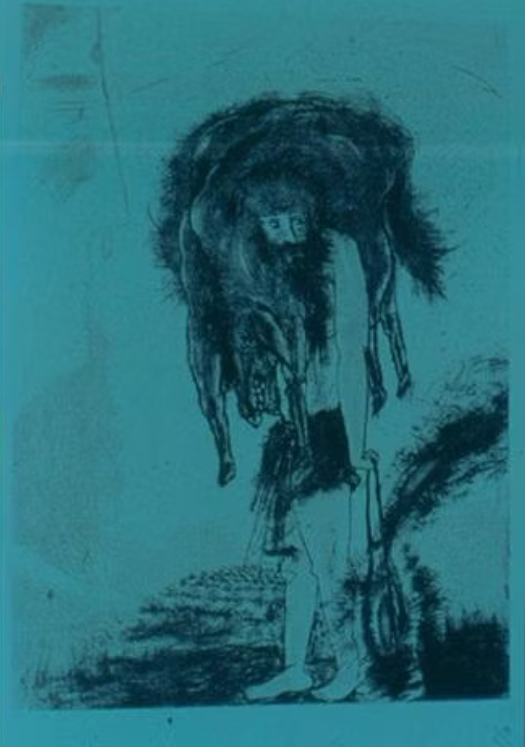
Capital Owning Castes Define Art Galleries Market
The Indian Art market saw its best performance in the financial year 2021 with a turnover of 880.9 Cr, but this is strictly the ‘language of statistics’. Most of this revenue generated by the art market excludes the paintings created around Dalit resistance themes.
Rajesh Nirmal, a Dalit performer and writer, plays the character of a Dalit artist failing to get a gallery space in a megacity to showcase his artwork in the film ‘Mera Ram Kho Gaya’ (2019). His character in the movie is inspired by famous Dalit artist Savi Savarkar, who is said to be one of the first artists to pigeonhole ‘Dalit Art’ in India. he says:
“Dalit paintings sell well in Europe and elsewhere but not in India. The power and capital-holding communities of this country own the major galleries of the country. Frankly, gallery owners would not want to put up protesting Dalit Art, which stands against their own community’s authority in the society.”
‘Dalit Resistance Art is not only Decorative’
Shailendra Pante, a Mumbai-based Dalit fine arts student, recites his understanding of gallery culture in the country:
“Every gallery wants to make money in the end, and that is why they take up decorative canvases, something that corporate houses and elites would buy. Dalit paintings are a form of non-violent protests and are not something people would like to put up in their bedrooms or halls as decorations.”
For some, using Dalit canvas creates the problem of beauty, while for some, it creates distrust, says Aatika, a Dalit art scholar from JNU,
“I don’t feel dalit art is non-decorative. In my view, people don’t buy dalit art because it makes them uncomfortable in the gut. People see Dalits with a lens of disgust, especially towards their eating habits. All these Dalit paintings with dead animals, beef, this grosses the audience out.”.
According to the National Crime Record Bureau data, almost ten Dalit women and girls are raped daily. As many as eight Dalit men died while cleaning sewers in various parts of Gujarat in the last year, while as per the exact statistics, atrocities against scheduled castes increased by 1.2% in 2022 over 2021. With the underlying conditions of the Dalit community being so, radical painters and photographers can’t look away from themes that are as real to them as posh wine glasses are to art connoisseurs of urban art galleries.
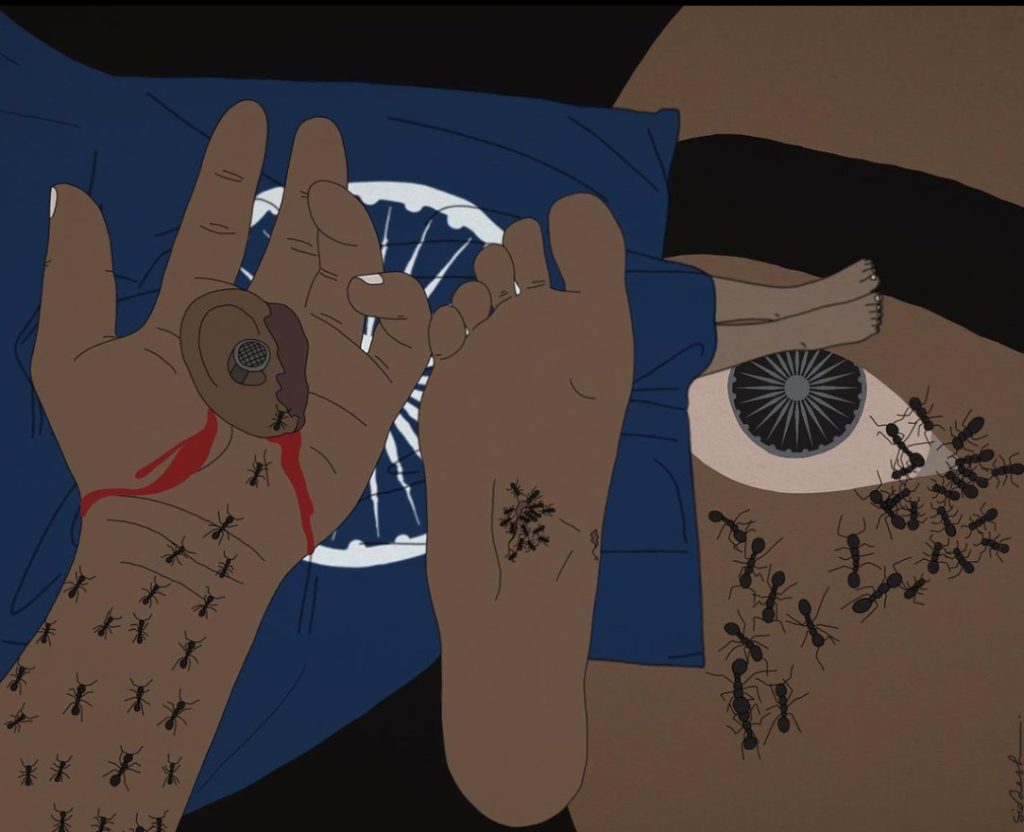
‘Galleries Stands with Shuffling Their Content’
This Dalit History Month, no famous private or public art galleries accommodate Dalit Art in Delhi, and most spaces usually take up contemporary modern art pieces. They had no special exhibition related to Dalit History Month. With a limited aesthetic understanding of art veterans and elites, the art curation industry bears the burden of getting outstanding profit and shuffling between various artists and art installations.
“The gallery industry is not disinterested towards protesting artwork as such. However, we must engage with Dalit Art in a disinteresting state because wealthy hospitals and hotels do not buy blatant, monochromatic, abstract art pieces. We are not not-dalit; we just can’t put up extremely radical paintings…”
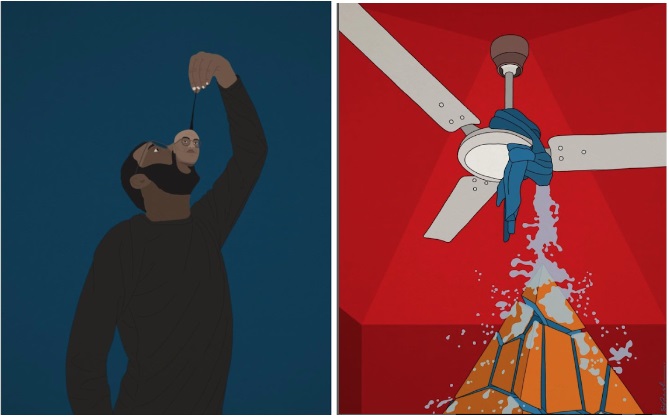
The burden on art curators themselves can instead justify her anonymity. Art curators are responsible for the smooth operation of the art gallery through all financial seasons, along with the responsibility of fetching profit for owners and stakeholders. Art veterans and elites can possess a limited aesthetic understanding of art, but these eventually own art galleries or are the customers themselves. Art curators hardly enjoy the authority to shuffle between diverse artists and styles when ‘what is aesthetically sound’ is decided by a few money-makers!
“It is miserable that only a small body of patrons of art enthusiasts and curators have to bear a disproportionate burden of doing justice to all kinds of art forms from across the population. Art galleries majorly become sites of intersection between an artist and the clientele.”, adds the anxious and anonymous art curator.
Like any other industry, the art curator’s market is also guided by the basic economic principle of demand and supply. But Art by Dalit painters in galleries is not only a question of the painting style but of representation. From the artist’s standpoint, ‘art’ per se has no category but is instead a means of expression and sometimes dissent. The term Art created by the Dalit community in private galleries is essential because a significant chunk of revenues and profits of the deserving artist does not reach her, him or they.
The role of the State becomes of prime importance here. With the meagre fund of 0.075% of the entire budget allocated to Art and culture in the country, art curators and painters see no financial aid for the Art created by less-represented community sections. “Representation means freedom of expression. Art is the most vibrant form of protest, which allows the Dalit community to represent themselves. The government has never supported Art because it leads to more representation. The Brahmanical government does not want to share the power.”, says YS Alone, an Arts and Aesthetics professor from JNU.
The Instagram Exhibits: Siddhesh Gautam
With more Dalit artists joining the contemporary art circle of the country, Instagram has set aside the hassle of getting artwork to galleries for many artists.
In a conversation with Indian Cultural Forum, @Bakeryprasad, aka Siddhesh Gautam, a Dalit illustrator, spoke in support of digital spaces like many he uses for exhibiting art, collaborating and protesting.
“Indeed, the digital space is not accessible to all, but it still reaches way more people than art exhibitions limited to a few metropolitan cities. The accessibility becomes even less when we use English instead of regional languages, which worries me more. Offline art in the form of posters, zines and pamphlets is costly, and various young upcoming visual communicators are focusing more on digital screens than print and other physical forms. I think that both online and offline art should proliferate simultaneously.”
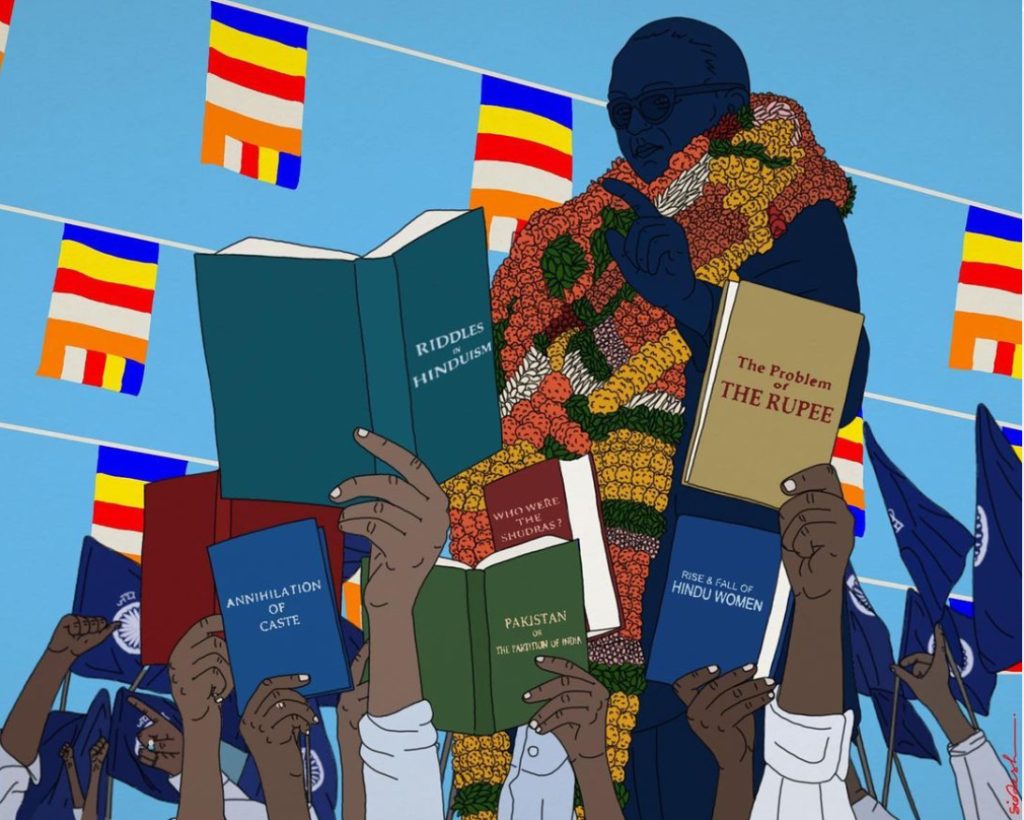
It Comes Down to Consumers
Fortunately, or otherwise, we live in a world where a vehicle is a ‘luxury car’, a skirt is a ‘dulhan wali feeling’, and toothpaste is ‘fresh (or French) kisses’. The art market operates on no different logic but that of demand and supply. In some ways, the art installed in galleries mirrors the art around us, vehemently lacking representation or recognition of the marginalised sections of society.
With opportunities bundling in urban markets, websites and social media have led young artists from across the country, especially from spaces that are politically less represented on the national stage, to exhibit their works of art and, more appropriately, their works of protest. The development of the internet and social media as a counter platform has also changed Dalit painters’ general definition of art from monochromatic to colourful ways of expression.
The process of crashing down upon the Brahmanical gallery structure awaits its birth from the change in the very personal attitude of the end consumers of the visuals.
Reference
Art Market Stats: dtnext.in
BakeryPrasad: indianculturalforum.in
Dalit History Month Special: Celebrating the Art and Resistance of Dalit Artists

Contributor

